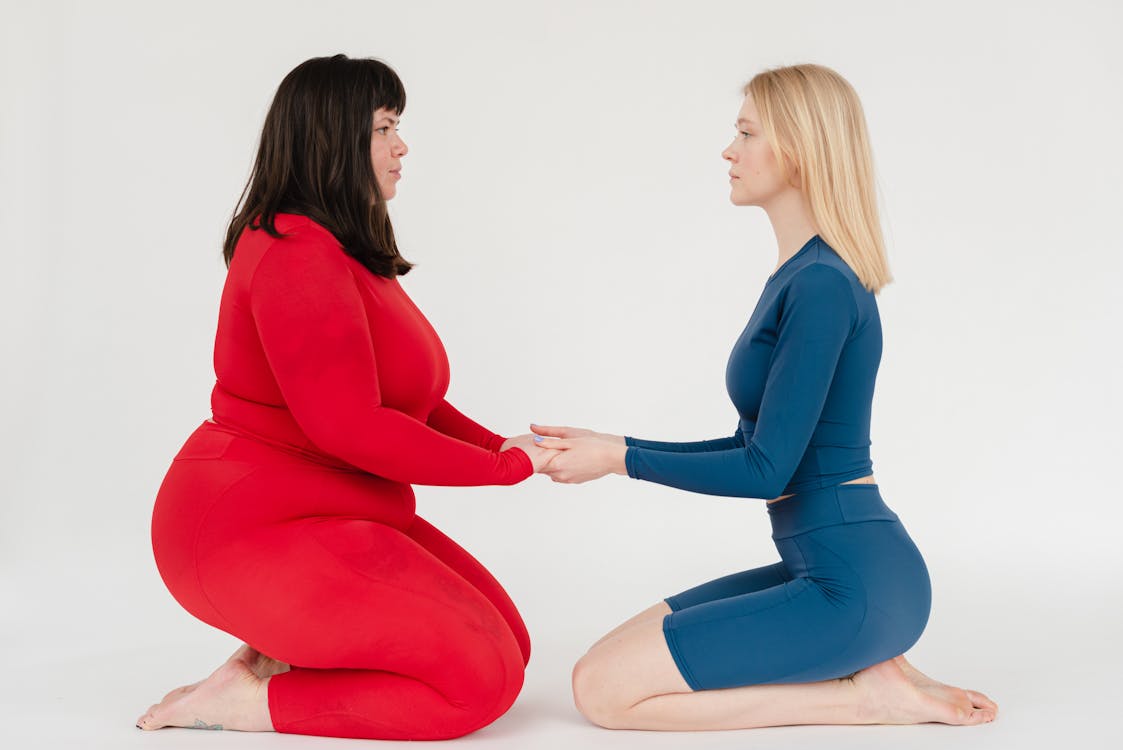What’s the Average Weight for Women:- If you live a balanced lifestyle, you can be healthy regardless of your measurements in comparison to the average. There are estimates of the typical weight and height of women, and these estimates vary based on the age of the woman Around 170.8 pounds (lbs) is the average weight of a woman in the United States who is at least 20 years old.It is a reliable source and measures 63.5 inches (in), which is equivalent to almost 5 feet (ft) and 4 inches in height. The data shown here might or might not come as a surprise to you. It has been reported by the Centres for Disease Control and Prevention (CDC) that approximately 31.9% of adults in the United States are obese.
What’s the Average Weight for Women?
What are the differences between Americans and people from other countries?
- A study from 2012 found that the average body mass of people in North America is one of the biggest in the world. To put it another way, more than 70% of people are either overweight or obese.
- Asians, on the other hand, have the least amount of body fat. Japan had a very low average body mass index (BMI) in 2005, at just 22.9. The average BMI in the US was 28.7, with this difference.
- For another way to think about it, 1 tonne of body mass is equal to 12 people in North America. In Asia, one tonne is equal to seventeen people.
How do you figure out weight ranges?
- Your normal weight depends on your height, sex, and the amount of fat and muscle you have. A lot of tools are out there to help you find your number. One of the most famous tools, BMI, uses a formula that is based on your height and weight.
- To find your BMI, split your weight in pounds by the square of your height in inches. Then, multiply that number by 703. You can also use an online tool with this information.Well-Known Source.
- Once you know your BMI, you can figure out which group it belongs to:
- Underweight: less than 18.5
- Weight range: 18.5 to 24.9
- Overweight: 25 to 29.9 kg
- Too fat: more than 30 kg
- Your BMI may not always be the best way to figure out what your ideal weight is, but it is a good place to start. BMI data can be wrong sometimes because of things like frame size, muscle composition, and age.
- Some people, like athletes, may weigh more because they have a lot of muscle, which makes them overweight. One more example is that adults over 50 tend to store more fat than adults over 50.
- It is important to remember that a child or teen’s BMI is given as a percentile. Teenagers’ weights and heights are always changing. So, the best way to figure out their BMI is to compare it to the BMIs of other kids their age and gender.
What does the link between height and weight look like?
- Your BMI can be a good place to start when looking at your health as a whole, even though it has some flaws. Look at this chart to find your ideal weight for your height and see where your BMI goes.
Height (ft and in) Weight for moderate BMI (lbs)
- 4’10” 91–119
- 4’11” 94–123.5
- 5’ 97–127.5
- 5’1” 100–132
- 5’2” 104–136
- 5’3” 107–140.5
- 5’4” 110–145
- 5’5” 114–149.5
- 5’6” 118–154
- 5’7” 121–159
- 5’8” 125–164
- 5’9” 128–168.5
- 5’10” 132–173.5
- 5’11” 136–178.5
- 6’ 140–183.5
- 6’1” 144–189
- 6’2” 148–194
- 6’3” 152–199
Also Read:-10 Deadly Food Poisoning Outbreaks in US History

What’s the Average Weight for Women?
How can I find out what your body makeup is?
- If you want to get the most exact reading on whether your weight is healthy, you might want to see a doctor for tests like:
- Densitometry uses underwater weighing to measure how thick a skin fold is bioelectrical impedance analysis uses a device to measure how much electricity flows through the body
- The American Council on Exercise uses the following category method to describe the percentage of body fat in women:
Classification Body fat (%)
- Athletes 14–20
- Fitness 21–24
- Average 25–31
- Obese 32+
Ratio of waist to hip
- To find your waist-to-hip ratio, you should first measure yourself at your normal waist and where your lower body is widest.
- A study from the World Health Organisation in 2008 says that women should have a waist-to-hip ratio of no more than 0.85.
- Women who have a waist-to-hip ratio of more than 1.0 are more likely to get health problems linked to visceral fat, or belly fat.
- Some of these health problems are type 2 diabetes, heart disease, stroke, and breast cancer.
- The waist-to-hip ratio might not be the best way to measure some groups of people, like kids and people with a BMI over 35.
How do you keep your weight in check?
- Keeping your weight in a healthy range can be tough, but it usually pays off.
- Getting to and staying at a healthy weight can lower your chance of a number of health problems, such as:
- Heart sickness and high blood pressure.
- Heart disease and type 2 diabetes.
- If you need to lose a few pounds to get to a healthy weight, read the tips below.
- You can get there by following these important steps.
Change how much you eat.
- If you want to lose weight or keep it steady, you don’t have to eat less. If you want to lose weight without drastically cutting your portions, you might want to rethink what’s on your plate. By focusing on veggies and lean proteins, you can keep your meal low in calories while still feeling full.
As an example:
- A palm-sized amount of lean protein, like fish or chicken breast, may take up a quarter of your plate.
- A fist-sized amount of whole grains, like brown rice or quinoa, can go in the last quarter of your plate.
- Leafy greens like kale, broccoli, and bell peppers may be piled high on the bottom half of your plate.
Wait for a while.
- There are times when you can finish a meal and still feel hungry. It might take a while for your body to fully process the food you eat.
- Some people might want to wait to eat again after finishing their meal if they are still hungry.
A lot of food
- Don’t skip meals and eat breakfast. To work at its best, your body needs to be fed regularly throughout the day. You won’t feel good and your body won’t work well if you don’t eat right.
Fibre is good for you.
- Every day, women might want to eat 21 to 25 grams of fibre. Foods like whole grain bread and cereal should help you if you’re having trouble in this area. You could also use whole wheat pasta, rice, or beans. The idea behind this is that fibre makes you feel full quickly and, in the end, makes you less hungry.
Get going!
- These days, it’s suggested that people exercise for 150 minutes a week doing moderate activities like yoga or walking or 75 minutes a week doing more intense activities like running or riding.
Get more water.
- Every day, women might need to drink at least 11.5 cups of water. Any drink, like tea, coffee, or sparkling water, counts towards your daily drinking goal. Water is best and has the fewest calories.
In short
- Your health is more than just your weight. No matter what size you are, it’s important to eat well, exercise, stay hydrated, and get enough sleep.
- Before you try to lose weight, talk to your doctor about what a reasonable goal is or find out what your BMI or ideal weight is.
- This will help you make a plan with the help of a doctor or chef. Next, set goals that you can reach.
If you like this article about What’s the Average Weight for Women? Please share this article with your friends and family members.

